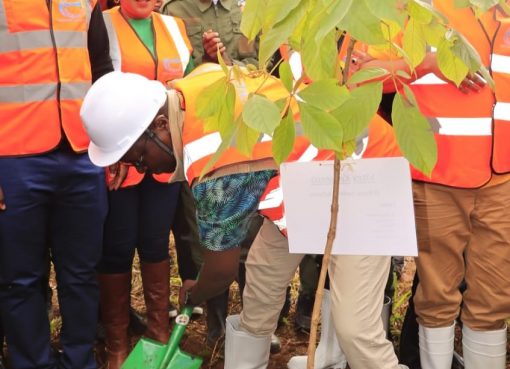The government is on course to actualize its ambitious goal of universal access to clean cooking energy by 2028 by facilitating the establishment of Liquefied Petroleum Gas (LPG) bulk import handling and storage facilities to bridge the supply gap in the country.
The government’s interventions in the LPG sector are guided by the Kenya National Cooking Transition Strategy (KNCTS) 2024–2028.
The 2022 Demographic and Health Survey (DHS) shows that there is a high dependence on traditional cooking fuels. “In total, 68.5% of the population, or 9.1 million households (1.7 million in urban areas and 7.4 million in rural areas), rely on traditional cooking fuel,” reads in part the DHS report.

The Principal Secretary for the State Department for Petroleum, Mohamed Liban, made an extensive tour of LPG bulk import facilities in Mombasa and Kilifi County on Monday to assess their level of preparedness to handle and supply LPG.
PS Liban toured the Kenya Pipeline Refinery Limited (KPRL) in Changamwe, where the Kenya Pipeline Company Limited (KPC) is constructing an LPG import, storage, and handling facility.
The project will provide existing shippers and other new entrants with bulk storage, road/rail tanker loading, and cylinder filling facilities for LPG gas, thus boosting supply in the local and export markets.
According to KPC, the proposed new facility is to be designed as a “common user” facility for dispensing LPG to interested parties through rail siding, truck loading, and bottling facilities. The facility will mainly receive LPG from pressurized LPG ships berthed at Kipevu Oil Terminal (KOT-2) Jetty into the storage tanks using a product import line.
The PS also toured private LPG investments, including Gapco (Total Energies) Terminal, Africa Gas and Oil Limited, and Lake Gas.
Liban said that the Regulation Policy is currently in its final stages of development, a collaborative effort between the State Counsel and the Energy and Petroleum Regulatory Authority (EPRA). This comprehensive policy aims to streamline the sector’s operations and ensure greater transparency.
Alongside this, the implementation of an open tender system, similar to the one utilized in the fuel sector, is also nearing completion. This new system is expected to enhance competition and efficiency, ultimately benefiting consumers and stakeholders alike.
Addressing the challenge of gas cylinders being lost and misused by middlemen, the Principal Secretary announced that the Ministry is developing an advanced ICT system. This project will assign unique tracking numbers to each cylinder, linking them to specific supplier companies to simplify record-keeping and enhance traceability, ensuring that cylinders remain within the legitimate supply chain and reducing the risk of unauthorized use.
He noted that they are now working on the regional mapping for assigning the companies to distribute the cylinders.
The PS said that it is important to closely monitor and support the operations of these facilities to ensure the main Key Performance Indicators (KPI) of the government regarding the supply of LPG are achieved.
The KPIs he said were the accessibility of the LPG. He stated that more than 12 million Kenyans are not yet accessing LPG. On affordability, he noted that LPG is meant to be very affordable for Kenyans to utilize. The safety and security of the LPG supply is also one of the key aspects the government is working on.
“Many Kenyans are either partially using LPG or relying entirely on firewood, this includes institutions such as public boarding schools, prisons, hospitals, the National Youth Service, and the police. Our goal is to eliminate the negative environmental and health impacts associated with these practices,” Liban said.
He assured that over the next ten years, the Ministry aims to ensure that 40 per cent of the 12 million people currently without access to LPG will be served through the Gas Reticulation Initiative. This initiative, championed by the President, aligns with efforts to provide affordable housing and improve living standards across the country.
“We are looking at the value Chain of LPG from the common user facility (infrastructure) so that private players can chip in, leading to consistent distribution and how it can be accessed. We are also focusing on the value chain of the production and the impact it will impose on Kenyans,” Liban said.
By Fatma Said and Sadik Hassan




